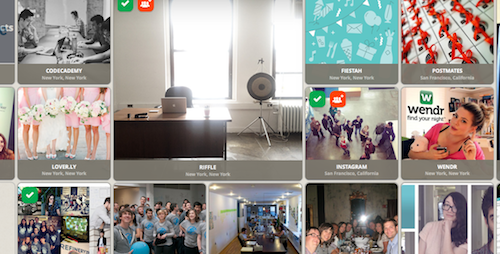
Image Credit: Screenshot capture from insidestartups.org
In a recovering service economy like ours, young job seekers face a different set of choices than they might have a decade or two ago. The prohibitively high cost of obtaining a traditional college degree--along with a lot of other economic factors--are changing not only the kinds of educational models available to young people, but also the career paths they are taking. One of the more common entry points to the workforce these days are Internet start-ups. Relative to their size they are better job creators than established companies and offer attractrive employment for all kinds of talent, from Ivy League grads to self-taught computer programmers.
If these sorts of trends interests you, there are plenty of ways to keep tabs on the start-up sector; TechCrunch, Venture Beat, and the New York Times Bits Blog aren't bad places to start. The coverage you'll see in these publications is focused on companies' products and business strategies. If you're interested in the culture of start-ups--the selling point for so many employees--then the visual database insidestartups.org is the place to look. This searchable gallery of start-ups, designed to connect companies and employees, is the best way to visualize the industry from a macro point of view, but also from the inside out. I recently used the site to teach rhetorical analysis, but its content strikes me as valuable in other ways. The website's prominent montage of profile pictures gives viewers a macro sense of the new startup "cohort," and individually, the images suggest possible values and directions for the new American workplace.
Recent comments
2 years 29 weeks ago
2 years 44 weeks ago
2 years 44 weeks ago
2 years 50 weeks ago
3 years 4 weeks ago
3 years 4 weeks ago
3 years 4 weeks ago
3 years 6 weeks ago
3 years 6 weeks ago
3 years 6 weeks ago